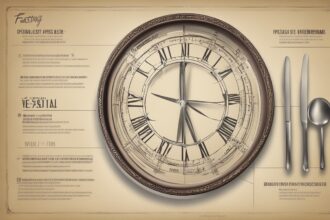Fasting has become a widely recognized practice for improving health, enhancing mental clarity, and supporting weight management. One of the most critical aspects of any fasting regimen is determining the optimal timing for fasting breaks. This decision can significantly impact the effectiveness of your fast, influencing everything from energy levels to metabolic health. In this comprehensive guide, we’ll explore the science and strategies behind finding the best time to break your fast, ensuring you maximize the benefits of your fasting window.
Understanding Fasting and the Importance of Breaking It Right
Fasting involves abstaining from food for a specific period, allowing your body to enter a state of rest and repair. Whether you’re practicing intermittent fasting (IF), extended fasting, or time-restricted eating, the moment you break your fast is just as important as the fast itself. Optimal timing for fasting breaks can influence how your body processes nutrients, stabilizes blood sugar, and maintains hormonal balance. Breaking your fast at the wrong time or with the wrong foods can disrupt these processes, potentially negating some of the benefits you’ve worked hard to achieve.
The goal is to align your fasting break with your body’s natural rhythms and energy demands. This means considering factors like circadian rhythms, activity levels, and personal goals. Let’s dive into the key elements that can help you determine the best time to end your fast.
The Role of Circadian Rhythms in Fasting Break Timing
Your body operates on a 24-hour internal clock known as the circadian rhythm, which regulates sleep, metabolism, and hormone production. Research suggests that aligning your eating windows with this rhythm can enhance the benefits of fasting. For instance, eating during the day when your body is naturally more active and metabolically primed can improve digestion and energy utilization. This makes optimal timing for fasting breaks a critical factor in syncing with your biological clock.
Studies indicate that eating late at night, closer to bedtime, can disrupt insulin sensitivity and increase the risk of metabolic disorders. Therefore, breaking your fast earlier in the day—ideally during late morning or early afternoon—may be more beneficial for most people. For those following a 16:8 intermittent fasting schedule, this could mean breaking your fast around noon if your fasting window ends then. Explore more about how circadian rhythms affect fasting in our detailed guide on Intermittent Fasting and Body Clock Alignment.
Matching Fasting Breaks with Energy Demands
Another crucial consideration for optimal timing for fasting breaks is your daily energy expenditure. If you’re physically active, breaking your fast at a time when your body needs fuel for performance can enhance recovery and prevent fatigue. For example, if you exercise in the late afternoon, breaking your fast an hour or two before your workout can provide the necessary energy and nutrients to optimize your session.
On the other hand, if you lead a more sedentary lifestyle or have a desk job, you might benefit from breaking your fast earlier to avoid overeating later in the day. Timing your first meal to coincide with a period of mental or physical demand can help maintain stable energy levels without overwhelming your digestive system after a prolonged fast. For tips on post-fast nutrition, check out our article on What to Eat After Fasting.
The Impact of Fasting Goals on Break Timing
Your specific fasting goals—whether weight loss, muscle gain, or improved mental clarity—also play a significant role in determining the optimal timing for fasting breaks. For instance, if your primary goal is fat loss, breaking your fast earlier in the day may help control appetite and reduce the likelihood of late-night snacking, which can contribute to calorie surplus. Research shows that front-loading calories (eating more earlier in the day) can support better weight management outcomes.
Conversely, if you’re fasting for autophagy (cellular cleanup) or other longevity benefits, you might prioritize longer fasting windows and delay breaking your fast until later to maximize the time spent in a fasted state. Understanding your objectives can help tailor your fasting break timing to align with these outcomes. Learn more about setting fasting goals in our post on Defining Your Fasting Purpose.
Practical Tips for Finding Your Optimal Fasting Break Time
While the science provides a foundation, personal experimentation is key to finding the optimal timing for fasting breaks that works for you. Here are some actionable tips to guide you:
- Start with a Consistent Schedule: Choose a fasting break time based on your daily routine and stick to it for at least a week to assess how your body responds.
- Listen to Hunger Cues: Pay attention to when you feel genuinely hungry rather than eating out of habit or boredom. True hunger often indicates your body is ready for nourishment.
- Consider Your Sleep Patterns: Avoid eating too close to bedtime, as this can disrupt sleep quality. Aim to break your fast at least 3–4 hours before you plan to sleep.
- Adjust Based on Feedback: Monitor energy levels, mood, and digestion after breaking your fast. If you feel sluggish or bloated, consider shifting your eating window earlier or later.
For additional strategies on structuring your fasting schedule, refer to our guide on Creating a Sustainable Fasting Routine.
Common Mistakes to Avoid When Timing Fasting Breaks
Even with the best intentions, it’s easy to make mistakes when determining the optimal timing for fasting breaks. One common error is breaking a fast too late in the day, which can lead to overeating or poor food choices due to intense hunger. Another mistake is ignoring individual needs—copying someone else’s fasting schedule without considering your unique lifestyle or metabolic rate can backfire.
Additionally, breaking a fast during a high-stress period or immediately after intense exercise without proper preparation can cause blood sugar spikes or digestive discomfort. Take the time to plan your first meal and ease back into eating with light, nutrient-dense foods. For more insights on avoiding pitfalls, read our article on Fasting Mistakes to Watch Out For.
Disclaimer: The information provided in this article is for educational purposes only and should not be considered medical advice. Fasting may not be suitable for everyone, including pregnant or breastfeeding individuals, those with certain medical conditions, or people on specific medications. Always consult with a healthcare professional or registered dietitian before starting any fasting regimen or making significant changes to your diet or lifestyle.
References
- Patterson, R. E., & Sears, D. D. (2017). Metabolic Effects of Intermittent Fasting. Annual Review of Nutrition.
- Harvard Health Publishing. (2018). Intermittent Fasting: Surprising Update.
- Longo, V. D., & Mattson, M. P. (2019). Fasting: Molecular Mechanisms and Clinical Applications. Nature Reviews Endocrinology.
- Mayo Clinic. (2020). Intermittent Fasting: What You Need to Know.
- Mattson, M. P., & Wan, R. (2005). Beneficial Effects of Intermittent Fasting and Caloric Restriction on the Cardiovascular and Cerebrovascular Systems. Journal of Clinical Investigation.
This content is for informational purposes only and not a substitute for professional advice.






